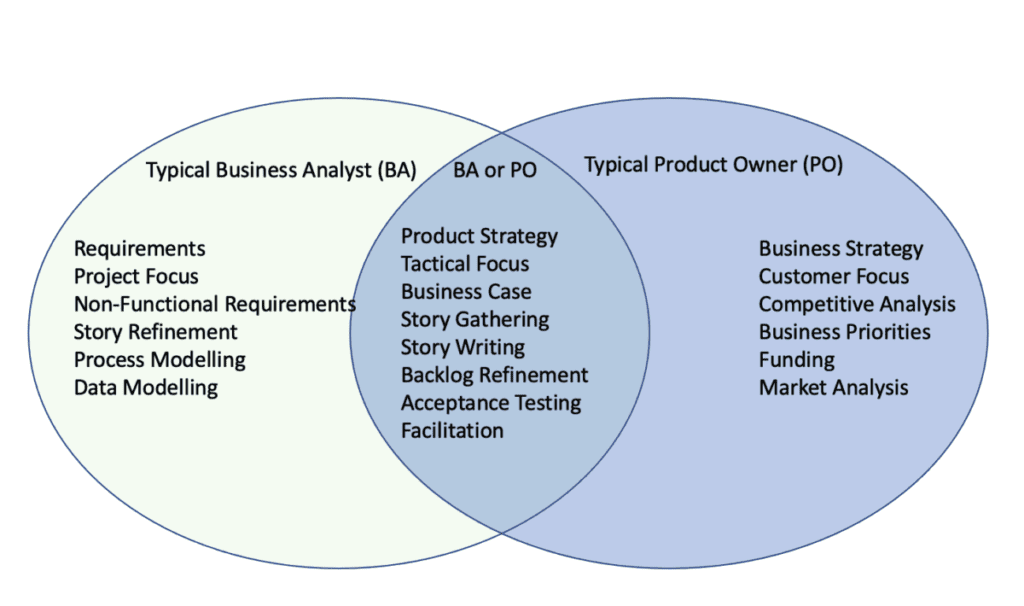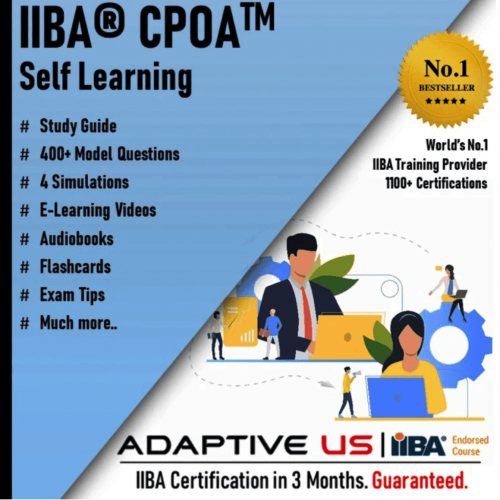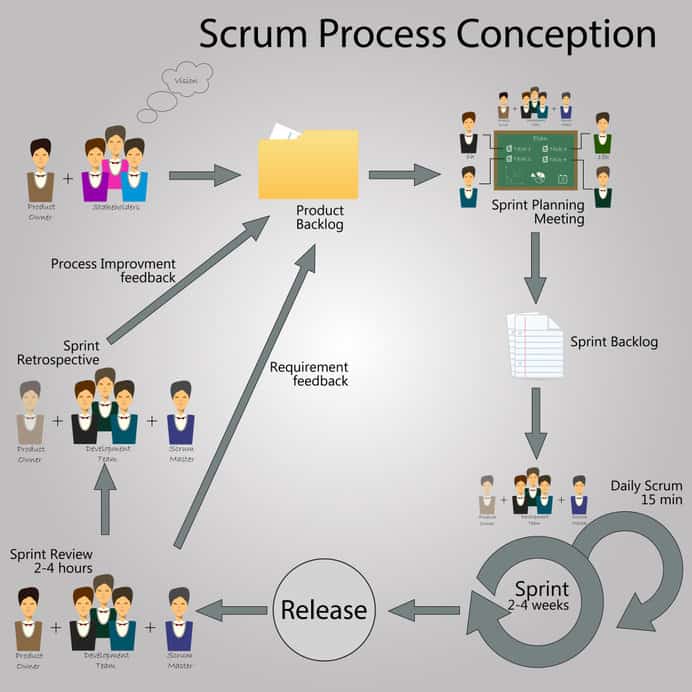Many business analysts working on a project using agile ways of working will find themselves working with a product owner or product manager. Whilst there are similarities between the roles there are also differences and it is important to understand the difference between a business analyst and a product owner so that both can work collaboratively for the successful outcome of the project.
As more organisations transition from project centric ways of working to product-centric ways of working, it is important to understand how product ownership and business analysis are evolving to continually the differences between a business analyst and a product owner.
The product owner 
The business analyst
Table of Contents
In an agile project the business analyst may find themselves working with a product owner or product manager; working as as a proxy product owner; or working as a business analyst or agile business analyst depending upon the project or organisational context. Regardless, in what situation the business analyst finds themselves in – it is important that the business analyst works collaborative to get the work done.
Let’s explore some of the key responsibilities of each of the roles.
Product Owner
The primary responsibility of a product owner is to maximise the value being created and delivered by the team. Product owner analysis supports product owners in their daily challenges and provides them with a wide range of analysis practices that help them create higher quality outcomes.
Some key responsibilities:
- Maximise the value of the product and champion the product vision.
- Ensure that development teams are producing incremental and relevant product value.
- Maintain backlog priority to achieve business and customer goals.
- Keep the backlog visible, clear, and transparent to stakeholders.
The Proxy Product Owner
Some business analysts may find themselves working as a proxy product owner. The proxy product owner may undertake some of the following key responsibilities:
- Maximise product value by understanding how business and customer needs translate to high value product.
- Maintain product backlog by expressing and elaborating product backlog items.
- Ensure that the development team understands items in the product backlog by interacting with the product owner and the team.
Business Analyst / Agile Business Analyst
Business analysis professionals can support product owner analysis activities to ensure the team’s success.
- Elaborate acceptance criteria and requirements artefacts for the product backlog items.
- Be involved in backlog refinement and planning workshops.
- Help product owner to write user stories.
- Facilitating story refinement with product owner and development team.
- Support the team during sprints to get work to done.
Business Analyst vs Product Owner

The product owner is more business and customer-oriented, while the business analyst is often more tactical and focused on the project.
When you consider the training and skills of a typical business analyst they are usually qualified to undertake some of the tasks of the product owner. This includes most of the backlog management functions, breaking large stories into smaller ones, modelling processes and data, defining business rules, and dealing with non-functional requirements. As a consequence there is some overlap between the two roles.
To what extent the business analyst works with the product owner will depend upon context of the project or organisation and skillset and experience of the product owner and business analyst. So it is important that both agree their ways of working together and as part of the project and use retrospectives to continuously improve.
Common Patterns of Business Analysts Working with Product Owner
The following are useful patterns for business analysts to work better with product owners for agile ways of working. The patterns provide a useful reference point for reflection and retrospectives and to continuously improve the collaborative agile ways of working.
The patterns are:
- Product owner as the bridge.
- Business analyst as the go-between.
- Business analyst as the proxy product owner.
- Business analyst as the supporter.
Product Owner as the Bridge
- The product owner plays the traditional role as dedicated and direct connector between the business community and the development team.
- This role when performed properly delivers the benefits of effective backlog management and the beyond backlog management benefits also.
- In such situations a business analyst is not present on the project and the product owner undertakes the business analysis activities that are needed by the project.

Business Analyst as the Go-Between
- A situation we want to avoid is a business analyst acting as a go-between from the business to the development team.
- The direct connection from the business community to the development team is funnelled through a business analyst. However, inserting a business analyst acts as a filter reducing the flow of information to the development team and diluting the message through translation and the relaying of it.
- The business analyst should identify this anti-pattern and suggest a more supportive and collaborative pattern of working.

Business Analyst as the Proxy Product Owner – Is a Common Compromise Situation
- Often a product owner is not available or only available sporadically and so a business analyst is assigned the role as a proxy product owner. This arrangement was typical on some of the earlier project engagements, where the agile ways of working was still being established.
- The problem here is while a business analyst may be great at backlog management, the business analyst might have authority challenges within the team.
- Development team members rarely question or ignore business priorities coming from a product owner sourced from the business, but this can happen with a business analyst playing the product owner role, leading to friction on teams.
- This pattern only works to a limited extent and for some projects may be the only option available. If so the business analyst working as a proxy product owner should use retrospectives to identify and channel decisions to a product owner (who may be from the business perspective – sometimes labelled a business product owner).

Business Analyst as the Supporter – A Better Solution
- Here the business analyst supports the product owner but does not act as a go-between.
- The business analyst can help with activities like story splitting and making sure non-functional requirements are being addressed.
- The business analyst can temporarily stand-in to answer questions from the development team when the product owner is not available, but always with the understanding the product owner has ultimate authority.
- This is the preferred pattern that business analyst should work towards when working with the product owner. The pattern supports the flow of work and resolution of blockers and supports the team to deliver business outcomes.

Business Analyst Supporter – Ways of Working (WoW) with Product Owner
In the ideal world – a project would include both a product owner and a business analyst with the business analyst operating in a supporter role to the product owner. The business analyst helps and supports the product owner by:
- Writing, splitting user stories.
- Ensuring that the non-functional requirements
are captured.
- Requirements modelling.
- Requirement’s elicitation
.
- Capturing business rules.
- Modelling business processes
.
- Modelling data
.
- Standing in to answer questions to the development team when the product owner is not available.
- Smooth execution of the sprints.
- Requirements clarification to the team.
- Facilitation support for users in UAT
.

Conclusion – Difference Between a Business Analyst and a Product Owner
There are differences between the business analyst role and the product owner. The product owner is more business and customer-oriented, while the business analyst is often more tactical and focused on the project.
There are overlaps between the role of a business analyst and product owner so both roles need to work from the start of the project to agree ways of working and use retrospectives to improve and work collaboratively together.
The pattern of the business analyst being the product owner is recommended pattern for the business analyst and product owner to work effectively together given their project or organisation context and their skillsets.
The business analyst must develop an agile mindset 
The agile ways of working is more and more replacing the traditional ways of working and it is imperative for business analysts to adopt agile business analyst mindset to continue to be successful.

